The first language to diverge from the Finnic linguistic unity was the South Estonian tribal language (cf. 1.2.4.), followed by Livonian. The separation of the South Estonian tribal language took place during the Middle Proto-Finnic period, the separation of Proto-Livonian during the Middle or Early Late Proto-Finnic period, apparently in western territories of the Central Baltic region. This was followed by the development of Late Proto-Finnic, that took place presumably in North Estonia, whither most of the Finnic people had moved already a thousand years earlier. During the Late Proto-Finnic period, contacts with Pre-Germanics continued, as a consequence of which the amount of Germanic loanwords in these ancient Finnic dialects was expanded (e.g. abajas 'fishing water', laid 'edge', rüsa 'fyke'). In addition, a number of common sound changes took place that differentiated Late Proto-Finnic from South Estonian, such as *kt > ht (tehti 'was done', vaht' foam', cf. SEst tetti, vatt 'id'), or from both South Estonian and Livonian, e.g. in individual words *ai > ei (hein 'hay', sein 'wall', cf. SEst hain, sain 'id').
During the first half of the first millennium AD, the divergence of the North and Central Finnic tribal languages began (cf. the figure in 1.2.2.6). The North Estonian tribal language along with Votic composed the Central Finnic dialect, whence the North Finnic group differentiated, being, in addition to Finnish, Karelian, Izhorian, Ludian and Veps, composed apparently also of the coastal dialect of North Estonian and the Kukkuzi dialect of Votic.
During the first millennium AD, many common secondary innovations took place in North Estonian and Votic that were shared also by South Estonian and Livonian, which formed the basis of the South Finnic sprachbund. In turn, North Finnic languages experienced not only the development of differences, but also a series of unifying sound changes, such as the change of short geminates into single consonants (e.g. sep̆pän > sepän 'smith') and the disappearance of the illabial central võwel (e.g. *sõpra > sepra 'friend'). There are, however, old common innovations shared between Southwest Finnish and North Estonian. (Fig. 1)


